Tom Venuto Wisdom
Hey you guys…
I found a fantastic article written by Tom Venuto.
Give it a read and you’ll see why I’m so hyped up on his fantastic book. He knows what he’s talking about and he speaks the truth!
The 2 Pounds Per Week Rule and How to Burn Fat Faster
By Tom Venuto
Creator of the Burn the Fat Body Transformation System
Why do you always hear that 2 pounds per week is the maximum amount of fat you should safely lose? If you train really hard while watching calories closely shouldn’t you be able to lose more fat without losing muscle or damaging your health? What if you want to lose fat faster? How do you explain the fast weight losses on The Biggest Loser? These are all good questions that I’ve been asked many times. With the diet marketplace being flooded every day with rapid weight loss claims, these questions desperately need and deserve some honest answers. Want to know where that 2 pounds per week rule comes from and what it really takes to burn more than 2 pounds of fat per week? Read on.
Why Only 2 Pounds Per Week?
The truth is, two pounds is not the maximum amount you can safely lose in a week. That’s only a general recommendation and a good benchmark for setting weekly goals. It’s also sensible and realistic because it’s based on average or typical results.
The actual amount of fat you can lose depends on many factors. For example, weight losses tend to be relative to body size. The more body fat you carry, the more likely you’ll be able to safely lose more than two pounds per week. Therefore, we could individualize our weekly guideline a bit by recommending a goal of 1-2 lbs of fat loss per week or up to 1% of your total weight. If you weighed 300 lbs, that would be 3 lbs per week.
Body Weight Vs Body Composition
Weight loss is somewhat meaningless unless you also talk about body composition; the fat to muscle ratio, as well as water weight. Ask any wrestler about fast weight loss and he’ll tell you things like, “I cut 10 lbs overnight to make a weight class. It was easy – I just sweated it off.”
You’ve also probably seen people that went on some extreme induction program or a lemon juice and water fast for the first week and dropped an enormous amount of weight. But once again, you can bet that a lot of that weight was water and lean tissue and in both cases, you can bet that those people put the weight right back on.
The main potential advantage of any type of induction period for rapid weight loss in the first week is that a large drop on the scale is a motivational boost for many people (even if it is mostly water weight).
Why do you hear so many diet and fitness professionals insist on 2 lbs a week max? Where does that number come from? Well, aside from the fact that it’s a recommendation in government health guidelines and in position statements of most nutrition and exercise organizations, it’s just math. The math is based on what’s practical given the number of calories an average person burns in a day and how much food someone can reasonably cut in a day.
How Do You Lose More Than 2 Pounds Per Week?
Can you lose more than 2 lbs of pure fat in a week? Yes, although it’s easier in the beginning. It gets harder as your diet progresses. How do you do it? My rule is, extraordinary results require extraordinary efforts. An extraordinary effort means a particularly strict diet, as well as burning more calories through training because you can only cut your calories so far from food before you’re starving and suffering from severe hunger.
Simply put, you need a bigger calorie deficit.
If you have a 2500 calorie daily maintenance level, and you want to drop 3 lbs of fat per week withe diet alone, you’d need a huge daily deficit of 1500 calories, which would equate to eating 1000 calories per day. You would lose weight rapidly for as long as you could maintain that deficit (although it would slow down over time). Most people aren’t going to last long on so little food and they often end with a period of binge eating. It’s not practical (or fun) to cut calories so much and in some cases it could be unhealthy.
The other alternative is to train for hours and hours a day, literally. People ask me all the time, “Tom, how is it possible for the Biggest Loser contestants to lose so much weight? Well first of all they’re not measuring body fat, only body weight. Then you have the high starting body weights and the large water weight loss in the beginning. After that, just do the math – they’re training hours a day so they’re creating a huge calorie deficit.
But without that team of trainers, dieticians, teammates, a national audience and all that prize money, do you think they’d be motivated and accountable enough to do anywhere near that amount and intensity of exercise in the real world? Would it even be possible if they had a job and family? Not likely, is it? It’s not practical to do that much exercise, and it’s not practical to cut your calories below a 1000 a day and remain compliant. If you manage to achieve the latter, it’s very difficult not to rebound and regain the weight afterwards for a variety of physiological and psychological reasons.
For Fast Fat Loss: Less Food Or Harder Training?
Trainers are becoming more inventive these days in coming up with high intensity workouts that burn a large amount of calories and really give the metabolism a boost. This can help speed up the fat loss within a given amount of time. But as you begin to utilize higher intensity workouts, you have to start being on guard for overtraining or overuse injuries.That’s why strict nutrition with an aggressive calorie deficit is going to have to be a major part of any fast fat loss strategy. Unfortunately, very low calorie dieting has its own risks in the way of lean tissue loss, slower metabolism, extreme hunger, and greater chance of weight re-gain.
My approach to long term weight control is to lose weight slowly and patiently and follow a nutrition plan that is well balanced between lean protein, healthy fats and natural carbs and doesn’t demonize any entire food group. To lose fat, you simply create a caloric deficit by burning more and eating less (keeping the nutrient density of those calories as high as possible, of course).
But to achieve the extraordinary goals such as photo-shoot-ready, super-low body fat or simply faster than average fat loss, while minimizing the risks, I often turn to a stricter cyclical low carb diet for brief “peaking” programs. I explain this method in chapter 12 of my e-book Burn The Fat, Feed The Muscle (it’s my “phase III” or “competition” diet).
The cyclical aspect of the diet means that after three to six days of an aggressive calorie deficit and strict diet, you take a high calorie / high carb day to re-feed the body and re-stimulate the metabolism. Essentially, this helps reduce the starvation signals your body is receiving. It’s also a psychological break from the deprivation which helps improve compliance and prevent relapse.
The higher protein intake can help prevent lean tissue loss and curb the hunger. A high protein diet also helps by ramping up dietary thermogenesis. A high intake of greens, fibrous vegetables and low calorie fruits can help tip the energy balance equation in your favor as fibrous veggies are very low in calorie density and some of the calories in the fiber are not metabolizable. Healthy fats are added in adequate quantities, while the calorie-dense simple sugars and starchy carbs are kept to a minimum except on refeed days and after (or around) intense workouts.
There’s No Magic, Just Math
In my experience, a high protein, reduced carb approach in conjunction with weights and cardio can help maximize fat loss – both in terms of increasing speed of fat loss and particularly for getting rid of the last of the stubborn fat. It helps with appetite control too. But always bear in mind that the faster fat loss occurs primarily as a result of the larger calorie deficit (which is easily achieved with sugars and starches minimized), not some type of “low carb magic.” If your diet were high in natural carbs but you were able to diligently maintain the same large calorie deficit, the results would be similar.
I’m seeing more and more advertisements that not only promise rapid weight loss, but go so far as saying that you’re doing it wrong if you’re losing “only” two pounds per week. “Why settle” for slow weight loss, they insist. Well, it’s certainly possible to lose more than two pounds per week, but it’s critically important to understand that there’s a world of difference between rapid weight loss and permanent fat loss.
It’s also vital to know that there’s no magic in faster fat loss, just math. All the new-fangled dietary manipulations and high intensity training programs that really do help increase the speed of fat loss all come full circle to the calorie balance equation in the end, even if they claim their method works for other reasons and they don’t mention calories burned or consumed at all.
Beware of The Quick Fix
Faster fat loss IS possible. My question is, are you willing to tolerate the hunger, low calories and high intensity exercise for that kind of deficit? Do you have the work ethic? Do you have the supreme level of dietary restraint necessary to stop yourself from bingeing and putting the weight right back on when that aggressive diet is over? Or would you rather do it in a more moderate way where you’re not killing yourself, but instead are making slow and steady lifestyle changes and taking off 1-2 lbs of pure fat per week, while keeping all your hard-earned muscle?
Remember, 1-2 pounds per week is 50-100 pounds in a year. Is that really so slow or is that an astounding transformation? You don’t gain 50-100 pounds over night, so why should anyone expect to take it off overnight? Personally, I think short-term thinking and the pursuit of quick fixes are the worst diseases of our generation.
If you want to be one of those “results not typical” fat loss transformations, it can be done and it may be a perfectly appropriate short-term goal for the savvy and sophisticated fitness enthusiast. It’s your call. But when you set your goals, it might be wise to remember that old fable of the tortoise and the hare, and buyer beware if you go shopping for a fast weight loss program in today’s shady marketplace.
Train hard and expect success,
Tom Venuto
Fat Loss Coach and Author
Burn the Fat Body Transformation System

About the Author:
Tom Venuto is a fat loss expert, lifetime natural (steroid-free) bodybuilder, independent nutrition researcher, freelance writer, and author of the #1 best selling diet program, the Burn the Fat Body Transformation System which teaches you how to get lean without drugs or supplements using secrets of the world’s best bodybuilders and fitness models.
Learn how to get rid of stubborn fat and increase your metabolism by visiting Tom’s Burn The Fat Website


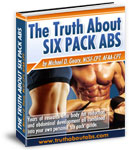

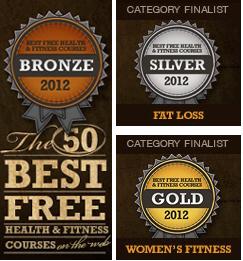


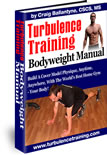
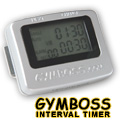





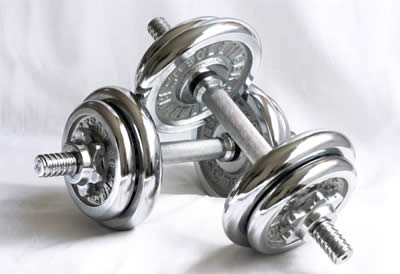
May 10th, 2009 at 4:15 pm
Damn, now if only I could end up looking like him.
That would be my ultimate goal but with my body type I don’t think it’s possible for me to gain that much muscle :(
May 10th, 2009 at 4:18 pm
*shrug* dunno… go really damn freaking HEAVY and go with the program designed to do it and … well, you’ll only know if you try! :-)
May 10th, 2009 at 5:20 pm
Think so?
I am 6’4″ and right now I am about 170lbs. So yes I am definitely on the lower end of the scale.
Before when I was working out, lifting/cardio every other day and taking in about 150 grams of protein a day I got up to about 195lbs. I was also taking creatine to help with building muscle but even at 195 I was nowhere near to looking like Tom.
I think if I wanted to look that big I would need to be around 230lbs or more to get the fullness look. Sure, I had the muscles and strength at 195 but I didn’t have the size which is something that I was really trying to go for.
Oh and I had been doing that for about 1.5 years. Which I realize it takes time to build up muscle but I had somewhat stalled at 195 and wasn’t really getting any bigger.
Judging that I would need to hit probably 230lbs or around there to get the fullness look, do you think that is even possible to gain 60lbs of muscle? I would classify my body type as ectomorphic as I have always been skinny/fit and could never really put on a lot of weight.
May 10th, 2009 at 5:25 pm
hmm.. dunno. but I’d lay off the cardio if you were looking to bulk up THAT much. and you’d definitely need the right lifting program too. Something specifically designed to pack on muscle, the right number of reps, the right % of 1RM stuff like that… to get it going on. sounds like you were heading in the right direction, albeit slowly (and yes, as Tom said, it IS a slow process too)…. I wonder how much heavier you would have gotten if you’d kept going.
May 10th, 2009 at 6:12 pm
Well I had gotten into it because my dad was somewhat following the Body For Life program and I sort of developed some stuff based off of that.
I was doing the 3 sets of 10 reps when lifting. I know it may not be the best way to pack on weight but there are just so many different ways to do everything that I had decided to just stick with that. And of course I wasn’t really changing up my actual workouts which I know you are supposed to do.
I’m sure as you mentioned had I had the proper training and the right system that I would have gotten bigger. I’d like to start it up again though and really getting into lifting again.
May 10th, 2009 at 6:35 pm
I’m hoping to find the right program for you once we get this site going that was mentioned in Brad’s show a couple of weeks ago. Stand by for that.
May 11th, 2009 at 4:04 am
Totaly offtopic:
In the latest episode of the fitcast Jonathan Fass talks about hamstring pulls which might be interesting due to your hamstring problem history:
http://thefitcast.com/episode-133-tony-makes-a-visit-to-talk-shop
May 11th, 2009 at 11:18 am
hey matthias, thanks for this.. I’ll check it out for sure!! :-)